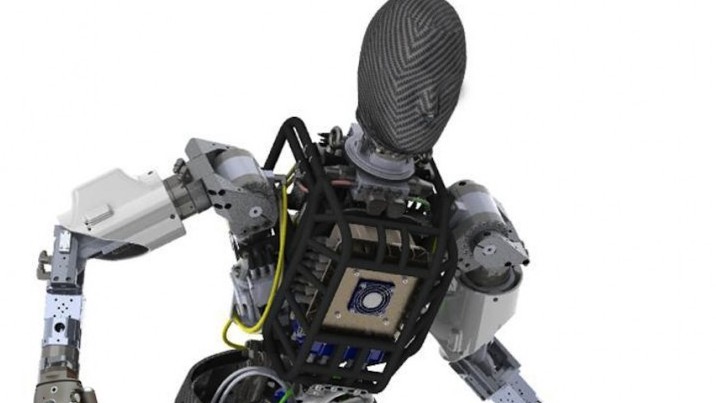Report urges U.S. to invest more in robotic and tech education to better compete internationally.
Article by Jonathan Vanian
While robots have the potential to be very intelligent, if there’s one thing that books, movies, and even our own experiences have shown, it’s that they also can be remarkably dumb. So one sure-fire way for the U.S. to continue leading the robotics world is by investing in education. Not only are these machines getting smarter every day, but so too are other countries, training the kind of workers required to operate robots that can coat cars on assembly lines with paint and produce sneakers faster than ever.
That’s one takeaway from a new report released Monday by a group of 120 robotics experts. Intended to brief the U.S. government on the state of robotics so that the government can better plan for the future, the Roadmap to Robotics report is sponsored by the National Science Foundation (as well as a few universities) and written by experts from the private sector as well as academic institutions like like Carnegie Mellon, Georgia Institute of Technology, University of California, Berkeley, and Yale.
The last roadmap, which the authors presented in 2009, led to the creation of the U.S. National Robotics Initiativeto support national robot research. One research project, for example, focuses on using robots to recognize the facial reactions of Parkinson’s Disease patients who have lost the ability to convey emotion to others because of reduced muscle activity.
Here are a few interesting findings in the newest report:
1. Robots won’t take U.S. factory jobs, but other countries might.
Don’t be scared that robots will take your job, explain the report’s authors. Robotics and related technologies “will increase U.S. jobs and global competitiveness.” And using robots to handle repetitive, strenuous tasks can help blue-collar workers prevent things like back injuries or medical conditions such as carpal tunnel syndrome that could shorten careers. And of course, all those robots and robotic control systems will need people to operate them, which could result in more jobs.
But the challenge for the U.S. is that many American workers don’t have the skills needed to work with robots. More funding in robotics and technology education is needed to combat this skills-gap and help “revitalize American manufacturing” the authors said.
Countries like China, South Korea, India, and Japan are already investing much more money on technology education—specifically in robotics and manufacturing—compared to the U.S., the report says. This disparity could lead to other countries taking advantage of the latest-and-greatest factory robots to boost their countries’ manufacturing industries while the U.S. falls further behind.
“Our foreign competitors are using the same innovations in technology with, in some cases, significantly lower labor costs to undercut U.S. dominance,” the report says. “U.S. manufacturing industry is facing increasing pressure.”
2. Some companies appear to be “grossly exaggerating” the skills of medical robots.
Robots won’t be performing heart-surgeries on our nation’s grandmothers… yet.
There’s still much more work to be done before robots can be routinely used in hospitals to help doctors perform surgery and other functions. Currently, several companies that claim that their robots are healthcare experts but reality proves otherwise, the report says.
Companies that sell robots to medical workers must ensure their marketing claims can hold up in real-life, the authors say. Unfortunately, many health-care workers “tend to have fairly low technology literacy levels,” which has led to companies taking advantage of these health-care professionals.
Some rural hospitals have ended up paying too much for sub-par technology, because some businesses have been “grossly exaggerating” the capabilities of their medical robots. In some cases, the report says the “deceptions have led to patient harm.”
The authors recommend that technologists and healthcare robotic companies marketing their wares be more transparent about what their robots can and can’t do, and properly educate medical workers on how to use them.
3. In 15 years, robots could literally deliver the goods.
If the robots of today have trouble climbing stairs or keeping their balance, the robots of the future will be able to run loops around them in urban areas.
The authors believe that with the continuing decline in hardware costs, combined with more powerful computers, companies will build far more advanced robots than the ones we currently have. Today’s robots with mechanical limbs only have dexterity comparable to that of toddlers.
In 15 years, robots may be able to move freely and autonomously in wide-open and unfamiliar spaces—not just small areas like a factory floor—and both interact and reason with their surroundings. Because of these advanced logistic capabilities, the authors believe there will be “small robots delivering packages,” warehouse robots capable of moving heavy objects, and self-driving trucks and planes routinely used to deliver goods in the future.
Additionally, self-driving car technology will be so good that these robotic automobiles will posses driving skills that “will be indistinguishable from humans except that robot drivers will be safer and more predictable than a human driver with less than one year’s driving experience.”
4. Robots will also need to learn—or they’ll die.
Although modern-day robots are getting better at learning their surroundings and roaming around in closed-in areas, future robots will blow them away. These robots, the authors explain, won’t require humans to program or train them. Instead they’ll be able to learn tasks on their own and alter their behavior based on what on what’s happening around them in their environment, like an autonomous vehicle that knows to drive more slowly during a sudden downpour.
And future robots will need to be fast learners, or they won’t be worth buying. If they’re to have lifespans the equivalent of modern-day computers (5.6 years) or industrial equipment (10.5 years), researchers will need to ensure they keep learning and adapting in ways that match human expectations. They’ll also need to “transfer what they have learned about their users to their replacements” says the research.
There hasn’t been much research into the longevity of these advanced robots, the report says, and more research would help people to better understand how to operate and interact with robots or robotic systems “that are used over the course of a decade or potentially longer.”
Read more at:
fortune.com




















